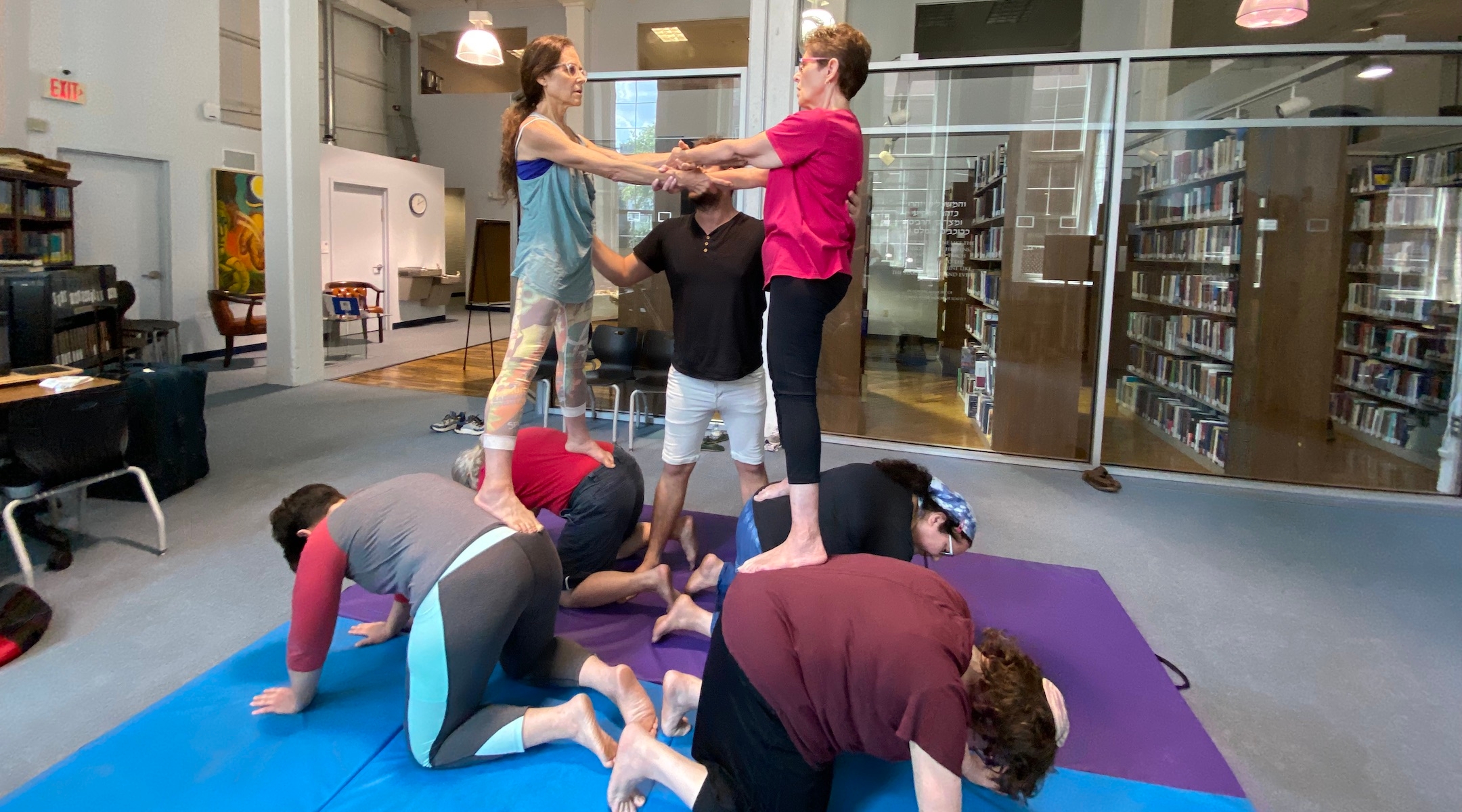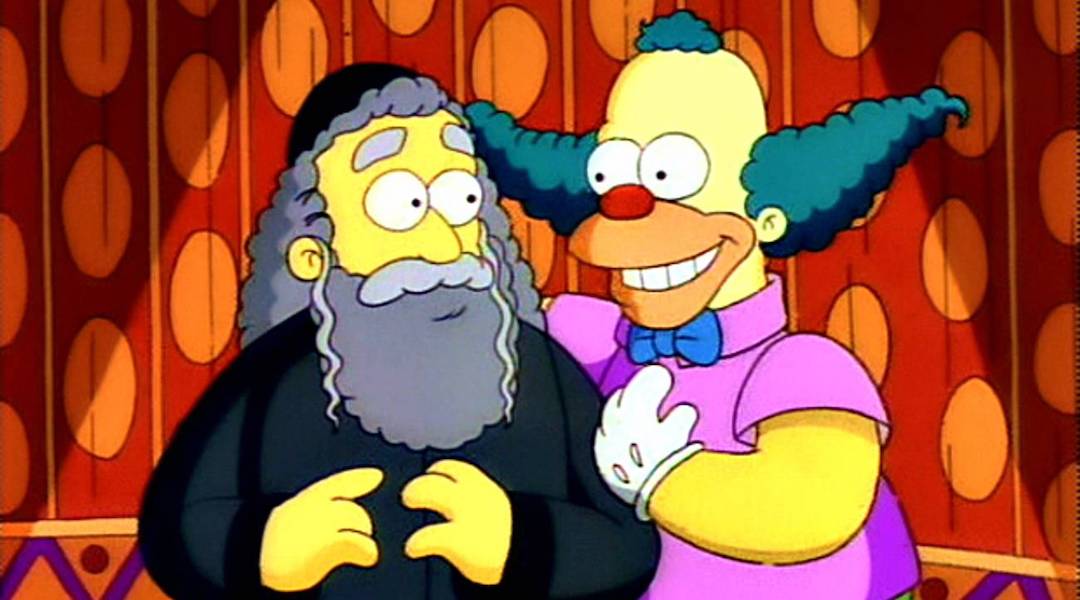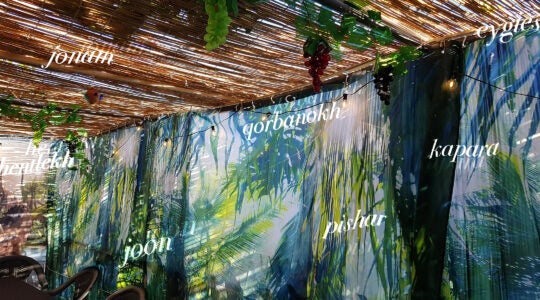(JTA) — For a brief and slightly embarrassing period in my teens, I wanted to run away with the circus. I sent a letter to Ringling Brothers & Barnum and Bailey Circus, asking for an application to their Clown College in Sarasota, Florida. I got back a polite letter saying I was too young to apply, but they invited me to visit backstage during their next residency in New York.
For some reason, I didn’t take them up on their invitation. And the next time I had any contact with Ringling Brothers, I was running away from the railroad tracks where the circus was parked in Philadelphia. I was on assignment for a national magazine to uncover evidence that the children of circus performers were being exploited. I didn’t find what I was looking for, and I have what might be an invented memory of a circus strongman in tights blocking my way. Needless to say I didn’t get any backstage invitations from the management.
When I started covering Jewish affairs, I assumed my circus days were over. That is, until I received a copy of “Under One Tent: Circus, Judaism, and Bible,” an intriguing new book edited by Ora Horn Prouser, Michael Kasper and Ayal Prouser. It’s a fascinating if at times unwieldy mashup of the history of Jews and circus, an introduction to what the editors call “Sacred Arts,” and a primer on how dance, circus skills and other movement can enhance the study of Jewish text.
Horn Prouser and Kasper are associated with the Academy for Jewish Religion, the nondenominational seminary in Yonkers, New York. Ayal Prouser is co-founder of Time Flies Circus. The book grew out of AJR’s Sacred Arts program, which uses “embodied” arts to explore the Jewish canon. Like the National Endowment of the Arts, which funds circus performers, they insist that circus is an art form, one that includes gymnastics, acrobatics, juggling, clowning and “equilibristics” (tightwalking and other balancing acts).

Students at the Academy for Jewish Religion in Yonkers, New York study a biblical text through circus movement, 2022. (Ora Horn Prouser, from “Under One Tent”)
Beyond the performance aspects, they also recognize the “heritage, codes, and history of circus.” The editors contribute a chapter on Jewish circus history, which begins with Resh Lakish, the Talmud sage who was said to have performed as a gladiator at Rome’s Circus Maximus. Their Jewish circus hall of fame includes the mime and Holocaust survivor Marcel Marceau, the Belgian resistance fighter and lion tamer (no kidding) Sara Hauptman and Paul Binder, the cofounder of the nonprofit Big Apple Circus.
Performer and researcher Stav Meishar writes about Jewish circuses under the Nazis. Famed outfits run by three Jewish families in Germany — the Blumenfelds, the Lorches and the Strassburgers — did not survive Hitler. Meishar mourns the “nearly complete annihilation of the German-Jewish circus royalty.”
But the focus of the book is on educational technique. Drawing on Howard Gardner’s theory of “multiple intelligences,” the editors and their contributors set out to demonstrate how movement generates insights beyond the written word. The editors offer an “awkwardly Freudian” example from Genesis 24, when the patriarch Isaac beds his wife Rebecca in the tent of his late mother Sarah. At a workshop held at Limmud NY, the annual Jewish learning festival, three women were urged to consider the episode while forming an acrobatic pyramid, stretching to hold each other in balance. One student came to understand the Bible passage as “referencing intergenerational maternal and female support — everyone doing their part.”

At left, posters from the Ziratron, Israel’s first permanent circus, which opened in Tel Aviv in 1950. Far right, an article on Jews in the circus, from “Idisher Bilder,” an illustrated Yiddish weekly, 1937. (Images courtesy Ben Yehuda Press)
This approach may strike some as, well, a stretch, but there is a long history of using art and drama to teach the Bible. In 1995, Peter Pitzele wrote his book “Our Father’s Wells,” a popular introduction to what he called “Bibliodrama” — learning Jewish text through the theater arts. Rabbi Amichai Lau-Lavie, founder of the experimental NYC congregation Lab/Shul, uses such techniques in his “Storahtelling” workshops and performances. Brooklyn artist Deborah Ugoretz offers workshops in Jewish paper cutting and manuscript illumination, promising to “reveal the deeper meaning found in texts and ideas.”
I may be the last person able to make light of an approach that combines circus and Torah: This week I start teaching an online class in Judaism and humor that suggests you can unpack a Jewish joke using the techniques of Torah study and come out with insights that are no less valuable or “serious.” Traditional yeshiva-style learning emphasizes that there are as many ways to understand the Bible as there are clowns in a tiny car, and Sacred Arts aims to uncover a few more. “Reading, imagining, and thinking produce one sort of understanding,” the editors write. “Making and doing produce another.”
If that means reading about the Binding of Isaac while walking a tightrope, as one student does in the book, why not?
So go ahead, Torah teachers: Send in the clowns.
JTA has documented Jewish history in real-time for over a century. Keep our journalism strong by joining us in supporting independent, award-winning reporting.







